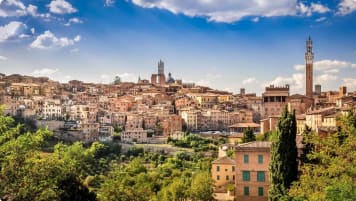Secrets of Florence: The Definitive Guide for Travellers
Secrets of Florence: Ten Hidden Gems to Visit Florence, the capital of the Italian region of Tuscany, is considered to be the birthplace of the Renaissance. Today the small city leaves behind a powerful legacy…
10 Oct 19 · 10 mins read
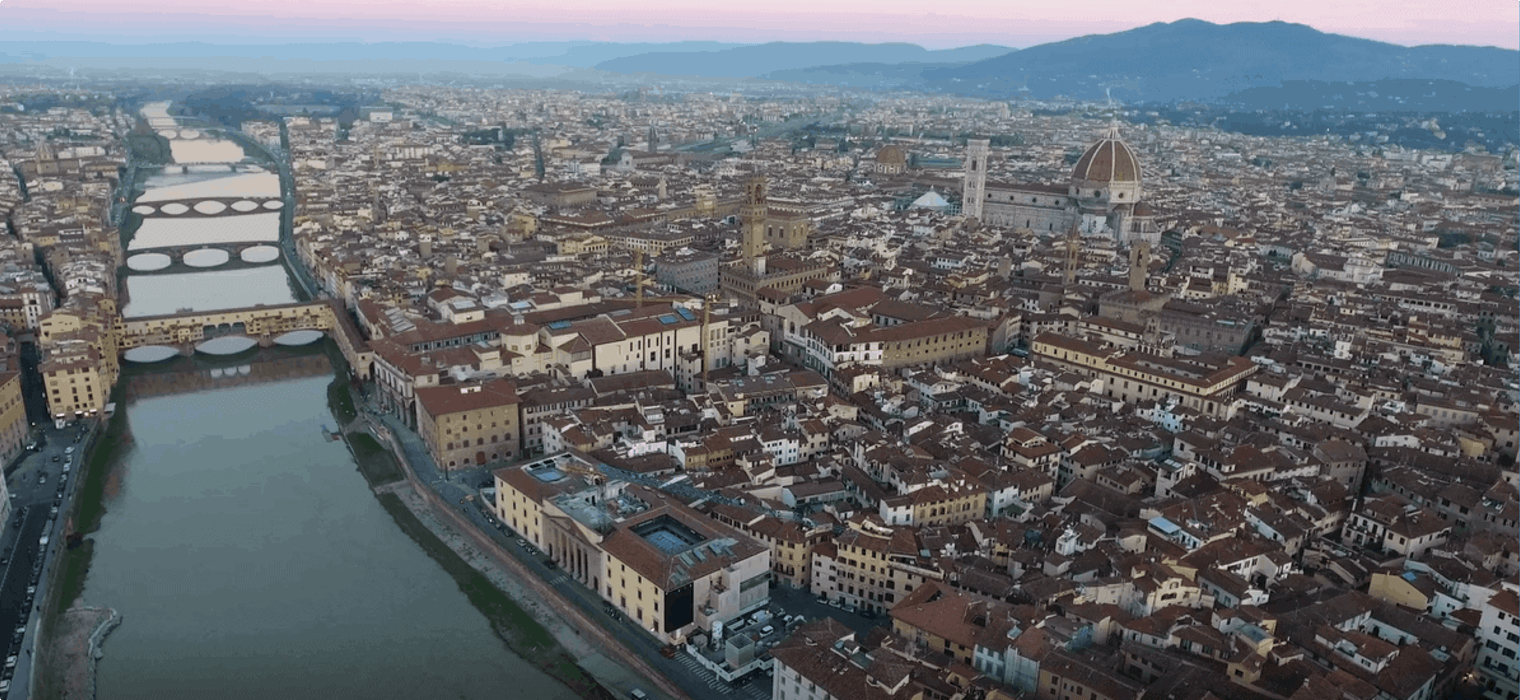
Secrets of Florence: Ten Hidden Gems to Visit
Florence, the capital of the Italian region of Tuscany, is considered to be the birthplace of the Renaissance. Today the small city leaves behind a powerful legacy and one that lives in the practices of art, commerce, finance and academia today. Home to renowned artists, thinkers and writers such as the poet Dante Alighiere and the political theorist Niccolo Machiavelli, as well as the formidable Medici family, Florence was once the capital of the Kingdom of Italy. The Florentine dialect would develop into the modern Italian language spoken in the country today. You can read more about the history of Florence here and about the Kingdom of Italy here. Today, it is a major tourist destination, with millions of travellers flying to Florence to view its art galleries, architecture, and historical monuments. There is much to see and do in this beautiful city (the entire city centre is a UNESCO World Heritage Site), but in this article we will explore some of Florence’s hidden gems and lesser known masterpieces. The primary reference for this article is Niccolo Rinaldi’s Secret Florence (with photographs by Waris Grifi) published in 2017 by Jonglez Publishing, which lists several more places of note in the Italian city.
‘Our Lady of the Flying Saucer’
At first glance, the 15th century Madonna and Child with the Infant St John (Madonna Col Bambino E San Giovannino), located in Palazzo Vecchio in the Hall of Hercules, looks no different from any other Renaissance paintings depicting the Nativity. However, in the background of this circular metre-wide painting are small figures of a shepherd and his dog looking up at what looks to be a spaceship.
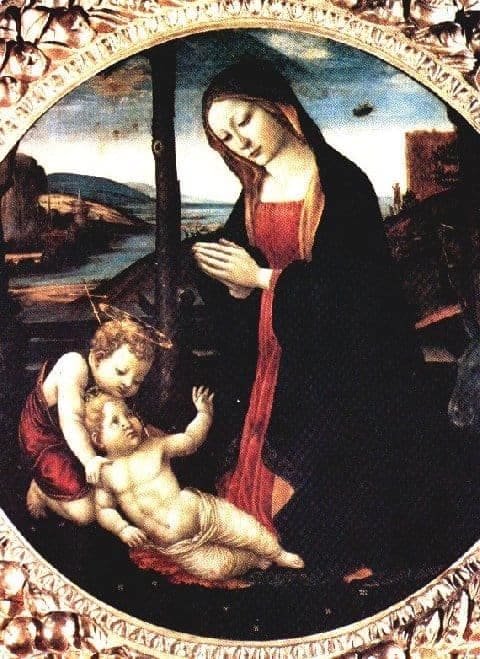
Staunch believers of the presence of extra-terrestrial life point to this painting in Florence as evidence of alien visitors prior to the avid documentation of UFOs in the 20th century. It was not the first time such strange objects have appeared in medieval art as well. The 14th century The Crucifixion in the Visoki Decani Monestary in Kosovo, Serbia depicts what appears to be two piloted “spaceships” and the 15th century The Annunciation with Saint Emidius by Carlo Crivelli in London shows a circular object shooting a beam of light down to the Virgin Mary.
However, art historians contend that though these aerial objects look like UFOs to modern eyes, they are actually simply artistic representations of angels or, in the case of The Crucifixion, the sun and the moon.
The Studiolo of Grand Duke and Alchemist Francesco I de’ Medici
Also in the Palazzo Vecchio is a small room commissioned by Francesco I de’ Medici, Grand Duke of Tuscany from 1541 to 1587, as his Studiolo. Though the name in English translates to “study”, it served more as Francesco’s vault room to keep his collection of strange and rare objects – his very own Wunderkammer, or ‘cabinet of curiosities’.
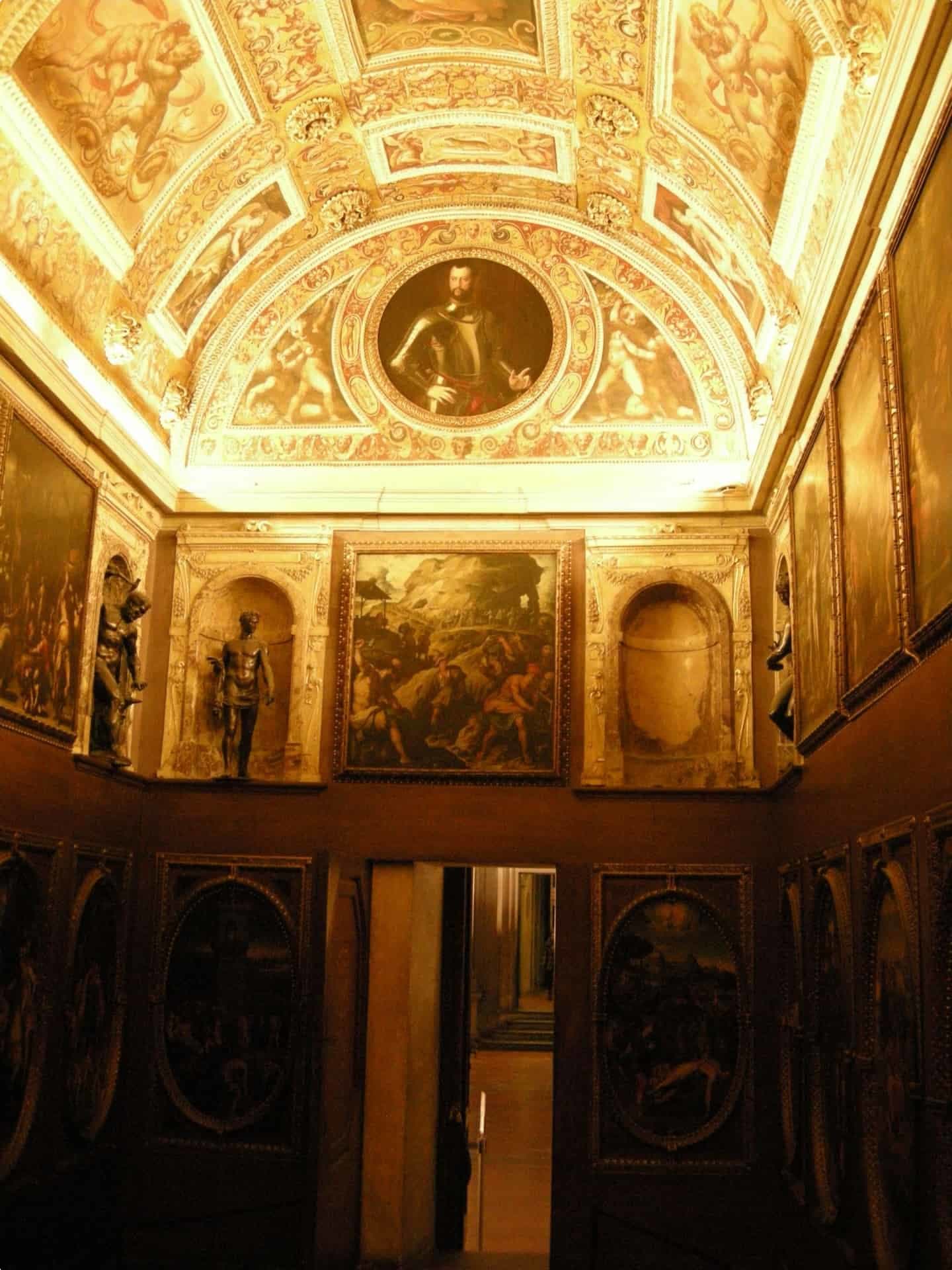
A keen student of alchemy, the introverted Grand Duke also had private laboratories in the Palazzo Vecchio for his experiments, some too esoteric to be practical, but some leading him to be the first European to produce soft-paste porcelain. The ‘Medici porcelain‘ was created to imitate Chinese porcelain and were sometimes given as gifts to state leaders and diplomats.
Inside the golden Studiolo, Francesco arranged his collection into 19 cabinets organised into the four Pythagorean elements of earth, fire, air, and water (one element per wall). Each cabinet was covered with a painting that referred to its contents; for example, Giovanni Butteri’s Discovery of Glass adorned a cabinet full of glassware, and the cabinet was placed on the ‘fire’ wall because heat is needed to make glass.
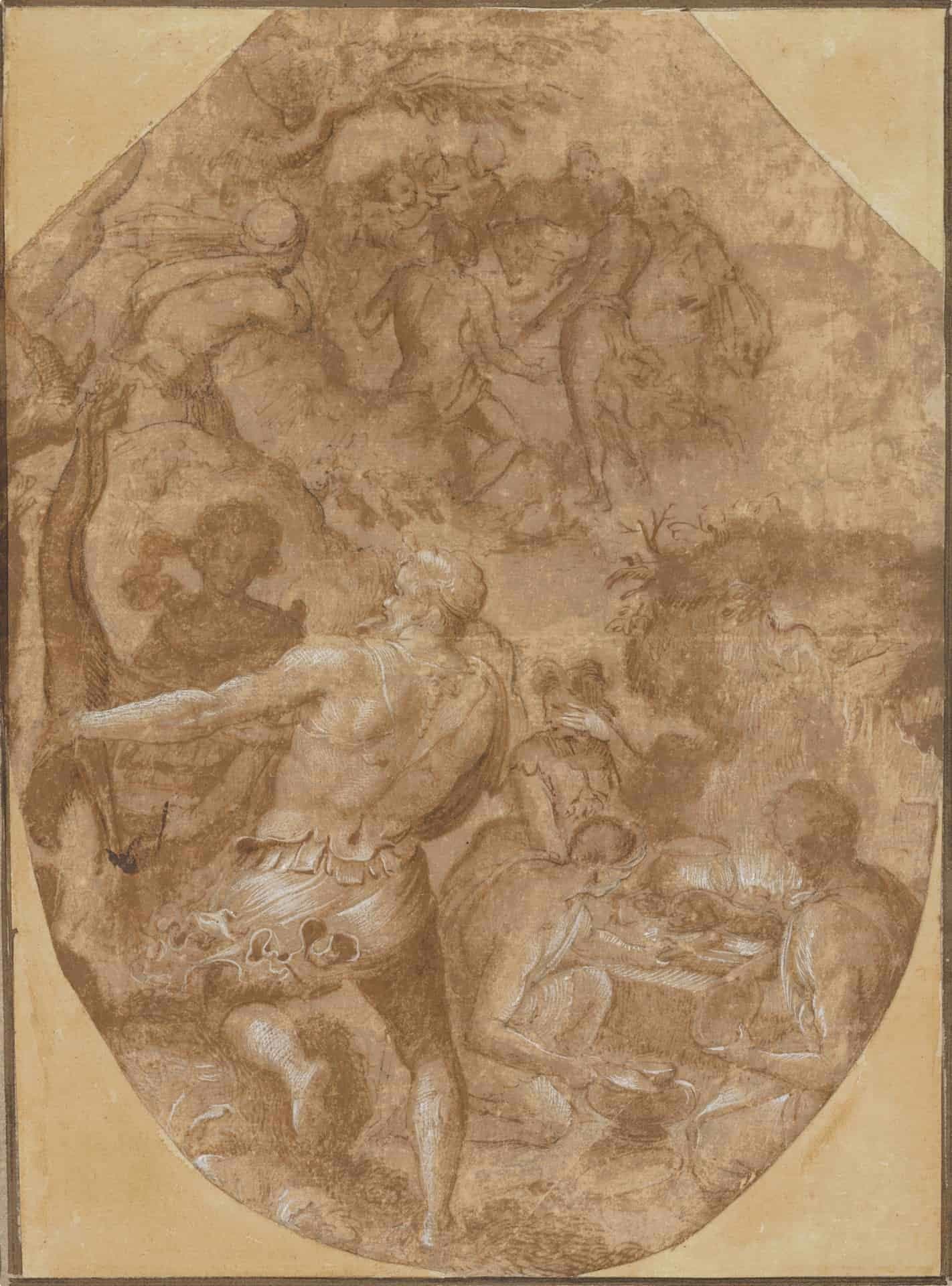
In all, Francesco commissioned 34 paintings. One of the paintings was Giovanni Stradano’s Il Laboratorio dell’Alchimista (The Alchemist’s Studio) depicting a master alchemist wearing an academic gown surrounded by workmen. In the lower-right corner, in front of the master, sits a workman painted to represent Francesco de’ Medici. As Elizabeth Loupas writes in The Florentine: ‘It may be how Francesco saw himself, in his secret heart’.


Francesco was described as a despot, subservient to the Habsburgs of Austria. His rule was also marred by several domestic scandals: his brother Pietro murdered his own wife, his sister Isabella was murdered by her husband, and there were rumours saying that Francesco poisoned his wife, Joanna of Austria, daughter of the Holy Roman Emperor, in order to be with his mistress, Bianca Cappello. He and Bianca died a few hours apart in 1587, and it was believed they were poisoned by his own brother and successor, Ferdinando. The official report said the cause of his death was malaria, but this remains inconclusive as it was possible he suffered from malaria and was poisoned.
Shortly after his death, his brother Ferdinando I had the Studiolo dismantled. It was reconstructed in the 20th century, but only the paintings and some sculptures were restored, the cabinets and its precious contents now lost forever.
The Foundling Wheel
On the left side of the entrance to Ospedale degli Innocenti (Hospital of the Innocents) can be found what looks like a small barred window adorned with two angelic children and an epigraph that translates to: ‘For four centuries this was the wheel of the Innocents, secret refuge from misery and shame for those to whom charity never closed its door.’

The ‘wheel of the Innocents’ or the ‘foundling wheel’ (known in the modern day as the ‘baby hatch’) became common in medieval Europe following a 12th century papal bill issued by Pope Innocent III, who wanted to stem the rising number of unwanted babies drowned in the Tiber River. The wheels, set in the exterior walls of churches, convents, or hospitals, operated like a revolving door and allowed individuals to leave an infant safely without fear of being recognised or punished. This was due to the fact that many of the foundlings were children born out of wedlock, so to be able to leave a baby anonymously was a necessity. The infant was left in the outside section through a small opening, and the wheel could be rotated into the building. Modern iterations include a heated crib and electronic sensors that detect movement in the crib and alert doctors or other caretakers.
The foundling wheel in the Ospedale degli Innocenti was installed in 1660 and was operational until the hospital’s closure in 1875. Aside from the historical baby hatch, the hospital is also worth a visit for its small museum of Renaissance art. Among the paintings it houses is The Adoration of the Magi by Domenico Ghirlandaio.
The Sundial Meridian in the Cathedral of Santa Maria del Fiore
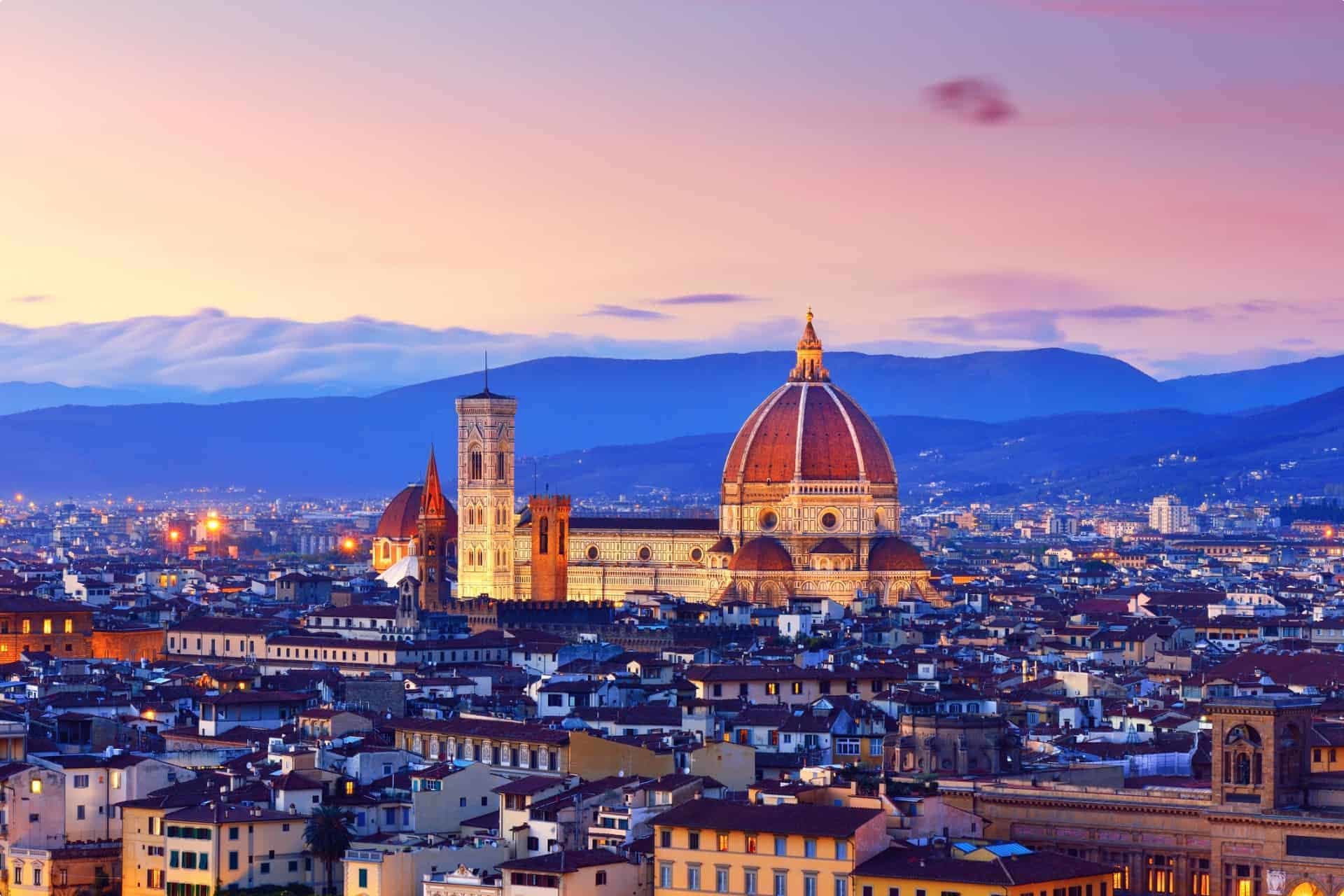
A traditional sundial is made up of a flat plate and a protruding ‘gnomon’ (from the Greek for ‘one who knows’). The sun shines and the gnomon casts a shadow on the hours marked on the plate. A variant of the sundial is the sundial meridian, where a ‘gnomonic opening’ allows the sun to shine through and project a circle of light (instead of casting a shadow) that falls on a meridian line that runs north to south. The higher the hole, the longer the beam of light and the more accurate the measurement. In 1475, mathematician Paolo Toscanelli built the highest gnomon opening in the world in the Cathedral of Santa Maria del Fiore. Three hundred years later, in 1755, Jesuit Leonardo Ximenes installed a marble meridian line on the floor of the cathedral.
The movement of sunlight on the meridian line makes it possible to determine the exact day of the year. The beginning of the line is reached on the day of the summer solstice, and the end of the line is reached on the day of the winter solstice. (The “solstice” is either of the two moments in the year when the sun’s apparent path is farthest north or south from the equator.) This greatly helped in determining the exact length of the solar year and the precise date of moveable feasts, such as Easter, an important Christian festival which celebrates the resurrection of Christ.
Observing the passage of the sun’s rays inside the cathedral during the summer’s solstice is a public event promoted by the Opera di S.Maria del Fiore. Members of the public need to email the Opera in order to reserve their spot as this annual event in June can attract a huge crowd.
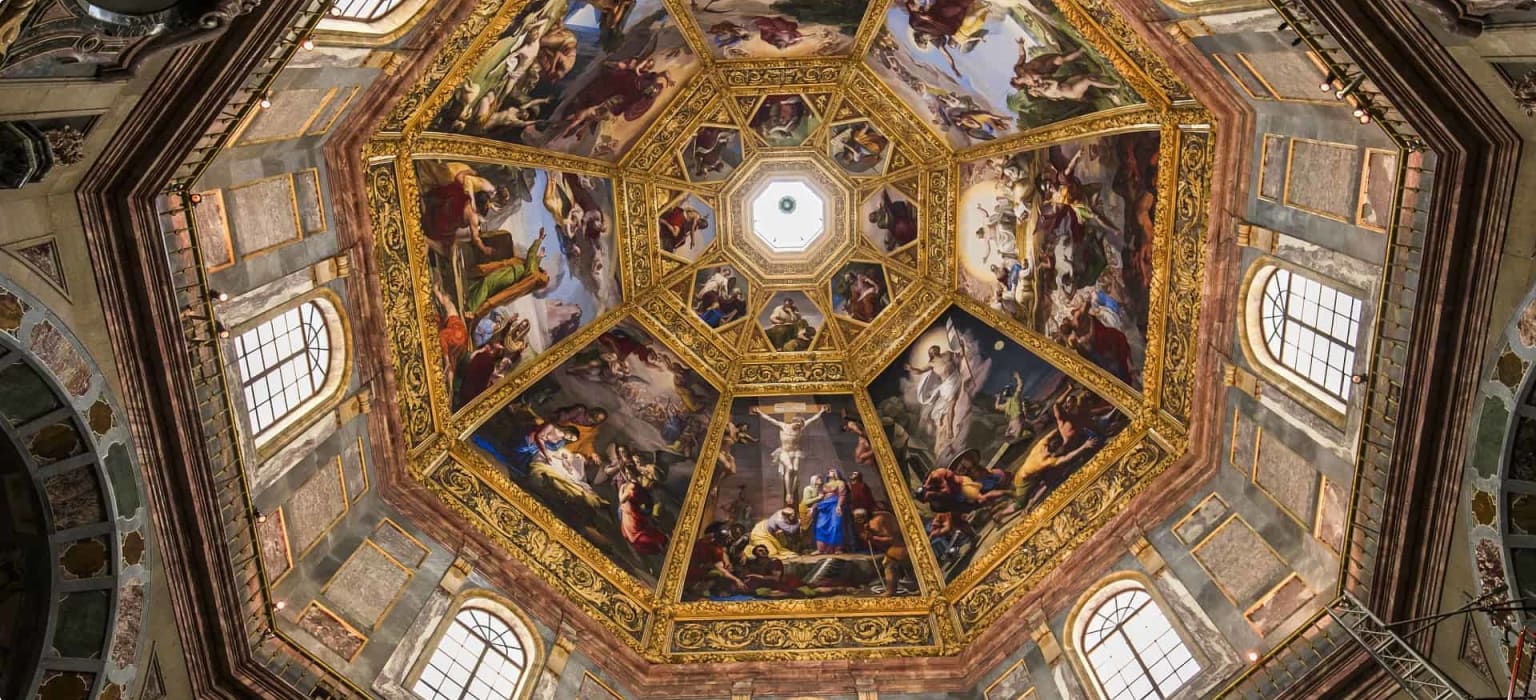
The Zodiac Sign in Basilica of San Miniato Al Monte
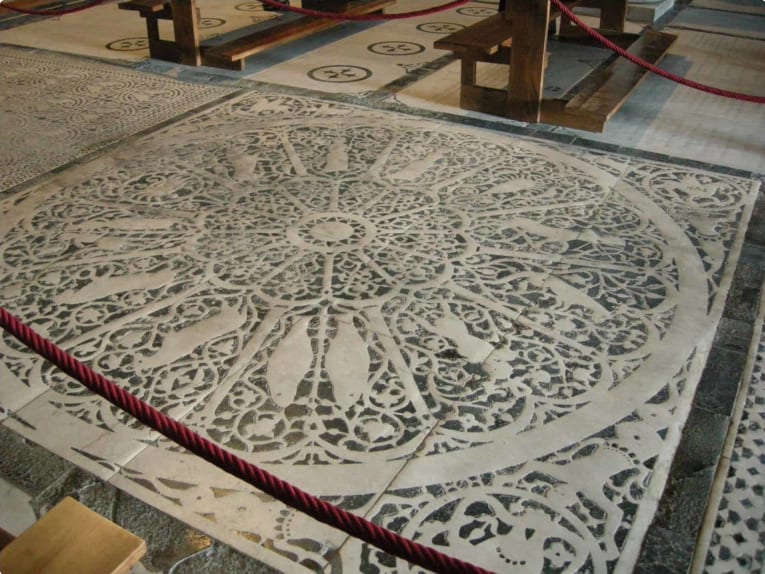
Another solstitial marker is the marble zodiac showing the twelve signs on the floor of the Basilica of San Miniato Al Monte (St. Minias on the Mountain). Originally mistaken for a simple decorative motif, the marble zodiac dates back to 1207. On June 21 at 1:53 pm, the sunlight coming through a window in the right of the basilica lands precisely on the sign of Cancer. Cancer covers the dates June 21 to July 22, and includes the Feast Day of St. John the Baptist (June 24), patron saint of Florence. In this brief, incredible moment, one can just marvel at the precision with which the basilica’s layout and the marble zodiac was aligned with the movement of the heavens.
An Astronomy Tower and a Room Full of Skeletons
Florence’s Museum of Zoology and Natural History, also known as Museo della Specola or La Specola is a branch of the Natural History Museum of the University of Florence. It is one of the oldest science museums in Europe, built in 1775 on the orders of Grand Duke Pietro Leopoldo to contain the collections from nature (fossils, minerals, and the like) of different generations of the Medici family. Think of it as the family’s own Wunderkammer.
Specola is an old Italian word that means ‘observatory’, and the site did house an Astronomical Observatory at the end of the 18th Century. The Torrino (tower) had the Sala della Meridiana (sundial hall) where the movements of celestial bodies are observed, and an octagonal room that allowed for 360-degree observations of the sky. Strangely enough, the observatory was built at the foot of a hill instead of on the summit, where observatories are usually located, and the poor location prompted a move to Arcetri in the mid-19th century. The old observatory at La Specola was restored and reopened to the public in 2009.
The museum itself has the world’s largest collection of 18th century anatomical waxes, including a depiction of a decomposing head created by Sicilian wax modeller Gaetano Giulio Zumbo. Another room is the Galileo Gallery, designed and built in 1841 by architect Giuseppe Martelli to pay homage to the Tuscan scientist. (Galileo Galilei was born in Pisa, then part of the Duchy of Florence.) The Gallery displays some of the scientist’s instruments.
In addition to this, La Specola has the Salone degli Scheletri (Skeletons Hall) on the ground floor, which houses 3,000 osteological exhibits. These are not fossils but skeletons of modern animals such as a sperm whale, suspended from the ceiling, and an Indian elephant. The other skeletons are kept in glass display cases.
The Skeletons Hall and Astronomy Tower can be visited by reservation only.
Museo di Casa Martelli
Casa Martelli (also called Palazzo Martelli), located in Via Ferdinando Zanneti 8, is a residential home of the Martellis, an influential family of bankers who were also passionate art collectors. The historic house dates back to the 15th century and was bequeathed to the Curia of Florence by the last Martelli, Francesca, in 1986. Since 2009, the house has been open to the public as a museum displaying in situ the family’s valuable art and possessions.
A distinct characteristic of the house’s interiors is the multicoloured frescoes that dominate a number of rooms. The frescoes apply the trompe l’oeil effect; trompe l’oeil is French for ‘deceive the eye’ and is used to describe paintings that create the illusion of a real object or scene. The frescoes depicted gardens to make up for the fact that Casa Martelli did not have an actual outside garden.
Casa Guidi
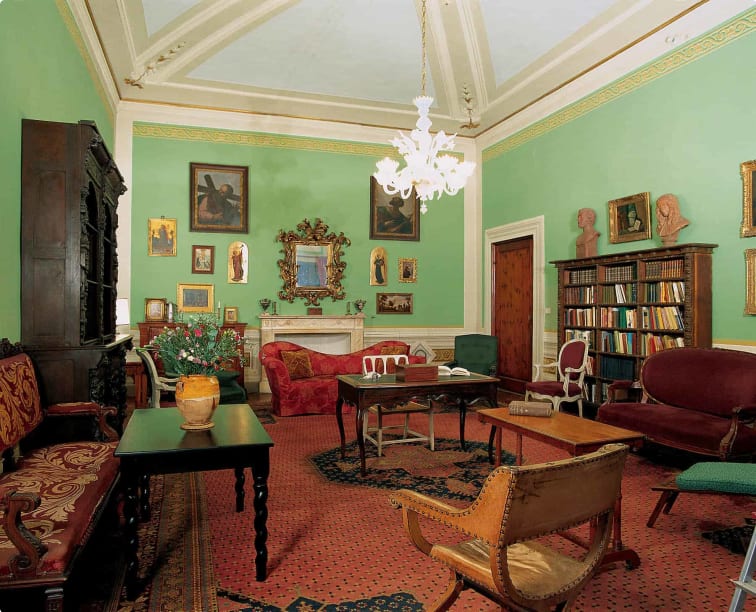
Another museum-house is Casa Guidi on Piazza San Felice, the residence (from 1847) of English poets Robert Browning and Elizabeth Barret-Browning (who gave birth to their son Pen in 1849 and who died in this house in 1861). Barret-Browning wrote about their home and the struggle for independence of her adopted country in her collection Casa Guidi Windows: I heard last night a little child so singing/’Neath Casa Guidi windows, by the church,/O bella libertà, O bella!
After Pen passed away in 1912, Casa Guidi was bought by Browning enthusiasts and later restored by Eton College and the Landmark Trust in an elegant 18th-century style. It is open to the public for 3:00 to 6:00 pm on Mondays, Wednesdays and Fridays from April to November. There is no admission fee, but donations are welcome. One of the two bedrooms can be rented.
A Templar Church in Florence
At the end of Via Faenza stands the Church of San Jacopo in Campo Corbolini, founded in 1206 and which served as the Florence outpost of the Order of the Knights Templar.
This powerful and often mysterious organisation has fascinated the public for centuries. The order was formed around the 12th century by a French knight to protect Christian pilgrims travelling to Jerusalem, some of whom were getting robbed and killed as they made their way through Muslim-controlled territories. Originally known as the Poor Fellow-Soldiers of Christ and the Temple of Solomon, they later called themselves the Knights Templar after they set up headquarters in Jerusalem’s Temple Mount. After many successful years, they received criticisms for their growing wealth, and soon many Templar members were being arrested, tortured, and killed. Pope Clement V dissolved the order in 1312, but some believe that the order still exists.
The medieval church, which can be accessed by asking for permission at the university entrance of Istituto Lorenzo de’ Medici (LdM), has frescoes and a massive altarpiece, as well as the strikingly realistic sculpture of the figure of Luigi Tornabuoni, Gran Prior of Pisa. The church has been deconsecrated (which means the building is no longer sacred and can be used for secular activities) and now serves as the setting for LdM (Lorenzo de’Medici Institute) conferences and receptions.
Rose Garden
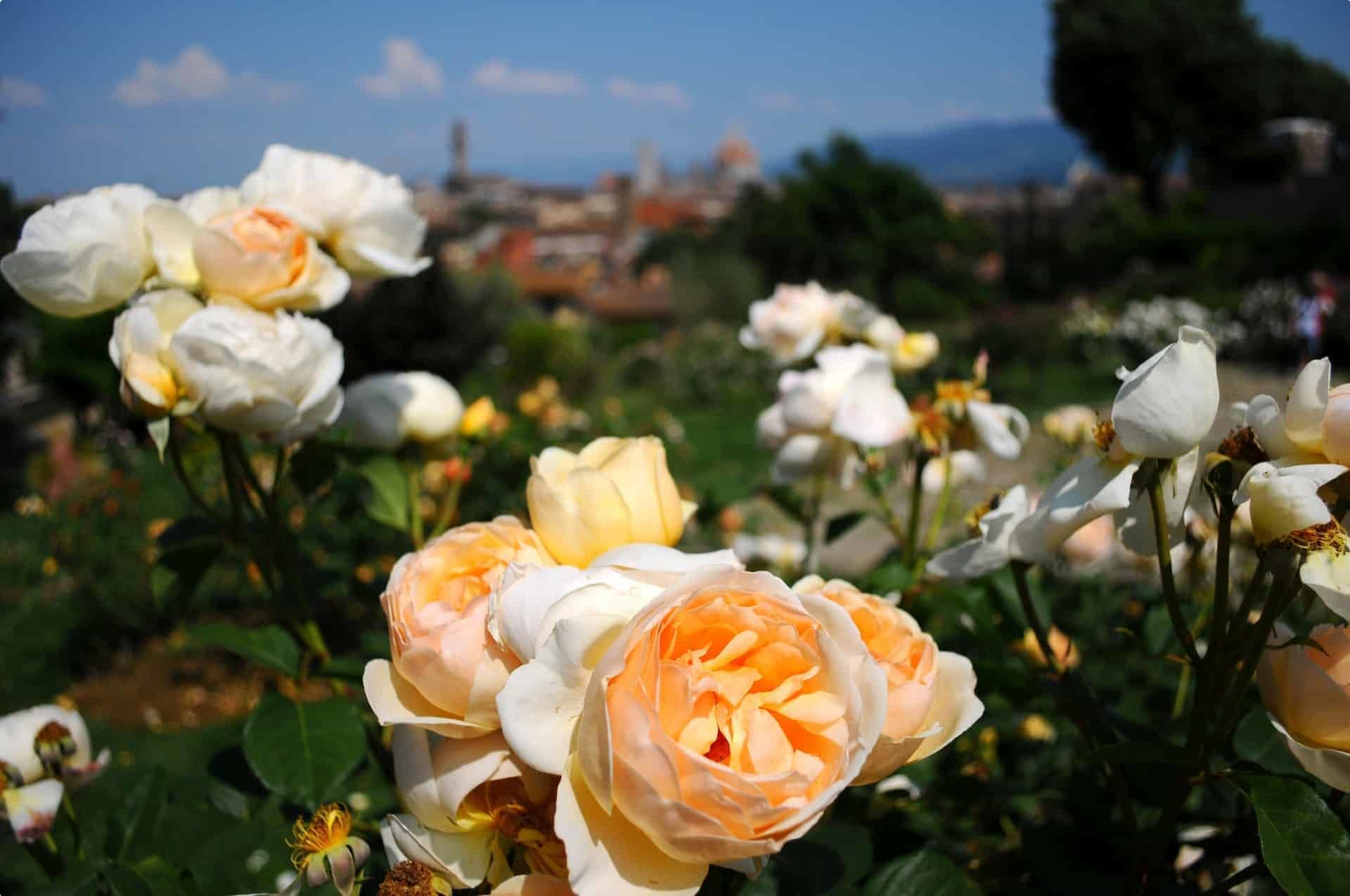
After being mystified and astonished by Florence’s strange sights, enjoy a stroll through the rose garden near Piazzale Michelangelo (Michelangelo Square) which offers a panoramic view of the city. The rose garden was designed by Giuseppe Poggi in the 19th century, and also contains a little surprise: a Japanese garden with materials imported directly from Japan. The Japanese garden was donated by Yasuo Kitayama and the Kōdai-ji Zen temple in Kyoto in 1998. Kyoto is a twin city with Florence, the cities’ relationship marked by cultural and commercial cooperation.
If you want to learn more about Florence and Italy, check out Odyssey Traveller’s small group tours, including a tour to Florence which will be based in the Renaissance city for 21 nights.
Click through to read the itinerary and sign up for the tour!
Related Tours

22 days
Mar, Sep, MayFlorence: Living in a Renaissance City
Visiting Italy
A small group tour with like minded people, couples or solo travellers, that is based in Florence. An authentic experience of living in this Renaissance city The daily itineraries draw on local guides to share their knowledge on this unique European tour. Trips to Vinci, Sienna and San Gimignano are included.
From A$14,375 AUD
View Tour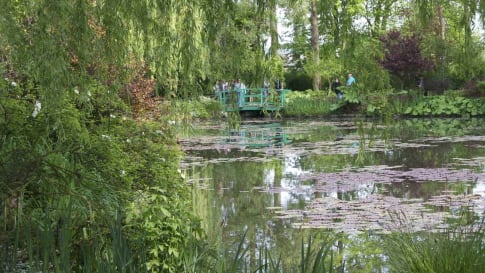
25 days
Aug, May, SepItaly and France, history of gardens small group escorted tour
Visiting France, Italy
Odyssey's small group tour explores some of the classic gardens of Italy and France that reflect changing fashions and garden designs throughout the ages. This fully escorted tour features an Odyssey Program Leader and a handful of local guides who will examine, discuss, compare and contrast the cultural and temporal similarities and diversities between the gardens of Italy and France and the historical influences on their design.
From A$17,595 AUD
View Tour
20 days
JulItaly Puccini Festival small group Tour
Visiting Italy
The Puccini festival is an escorted tour complete with local guides as part of our small group travel program, we will also visit Rome, Siena, Florence, Lucca, Viareggio, Genoa, Milan, Verona, and Venice. Join like minded people on this European tour in Italy. For solo travellers there is a nominal single supplement charged.
From A$15,995 AUD
View Tour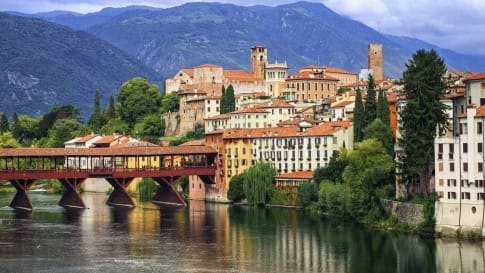
22 days
Oct, AprTour of Northern Italy's Lakes and Alps
Visiting Italy
A European tour to the stunning Lakes Region of Italy. Your travel experience begins in Milan, daily itineraries include two of the region’s lakes - Garda and Maggiore, plus the Roman villa Desenzona and a day in Cinque Terre. Local guides share experience and knowledge with you on this escorted small group tour for couples and solo travelers.
From A$14,895 AUD
View Tour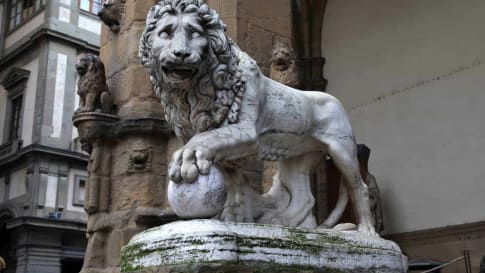
21 days
Apr, Aug, MayRenaissance Italy Tour: Story of Five Families
Visiting Italy
Explore Renaissance Italy on this small group tour though an examination of five significant city states. Florence, Urbino, Ferrara, Mantua and Milan were all dominated by families determined to increase the status of their city through art and architecture. Spend time coming to know the men and women who helped create the cities, as well as the magnificent legacy they left behind.
From A$14,295 AUD
View Tour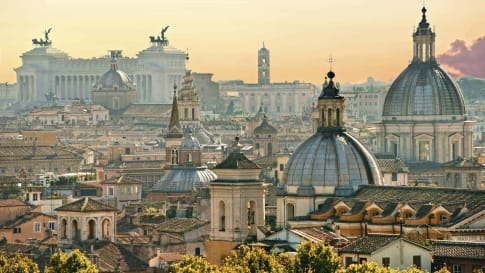
15 days
DecDiscover Rome | Cultural and History Small Group Tour for Seniors
Visiting Italy
Rome is arguably the most fascinating city in Italy, the capital city, once the centre of a vast, ancient empire and still today a cultural focus within Europe. Explore the city in-depth as part of a small group program spending 15 days exploring, just Rome and Roman History.
From A$9,235 AUD
View Tour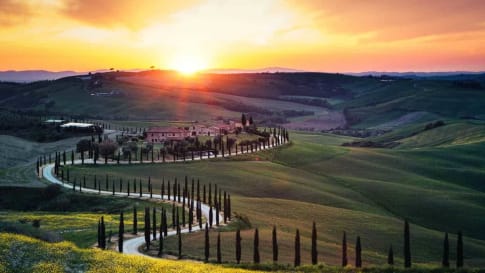
17 days
Sep, AugVia di Francesco Walking Tour | Small Group Walking Tours Italy
Visiting Italy
Experience with like minded people a small group journey walking Via di Francesco (or the Way of St. Francis) in Italy. One of a few European tour companies who offer a tour leader and local guides for senior couples and single travellers on this journey between the key destinations on this walk.
From A$12,050 AUD
View Tour
